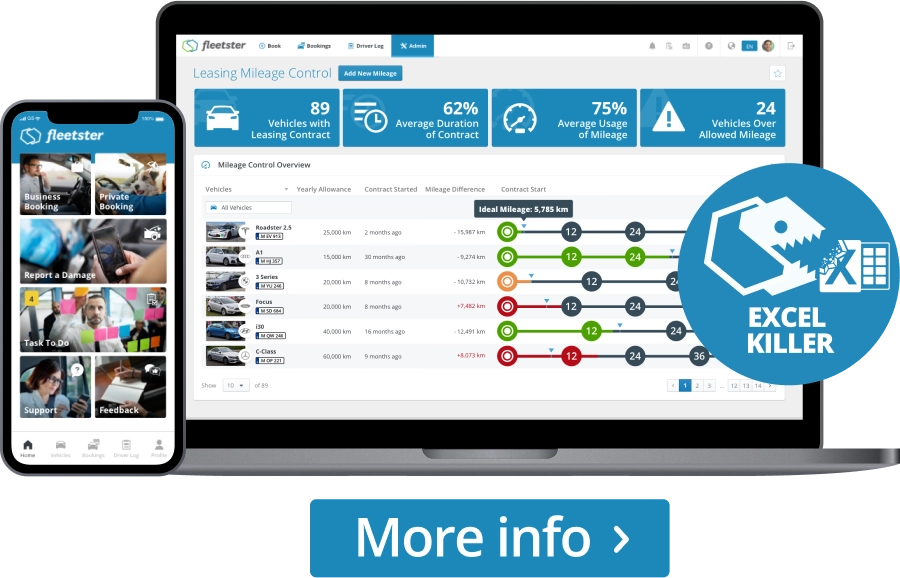
Moving Beyond Excel: Steps to the Transition to a digital Fleet Management Software
Transitioning from Excel to a dedicated fleet management software: from improved efficiency to enhanced data visibility. So, what exactly do you need to know when making this transition?
Step 1: Identify Pain Points and Needs
Before diving into the world of digital fleet management software, it's essential to assess your current fleet management processes and identify any pain points or areas for improvement. Are you struggling with manual data entry and tracking? Do you lack visibility into vehicle maintenance schedules or driver behavior? Understanding your needs will guide you in selecting the right software solution.


Step 2: Evaluate Features and Functionality
What is it that you really need? When considering a transition to digital fleet management software, take the time to evaluate the features and functionality offered. Look for key capabilities such as Vehicle management, vehicle tracking, damage management, fuel management, driver management, and reporting features. The goal is to find a solution that not only addresses your current needs but also provides room for future growth and scalability. As your fleet grows and evolves, your management needs will also change. Select a fleet management software that is scalable and customizable to accommodate future growth and evolving business requirements. Customization options allow you to tailor the software to match your specific workflows and preferences, ensuring a seamless fit with your operations. Make sure to keep that in mind and to find a solution that can cover both your currents but also your future needs.


Step 3: Data Migration Considerations
Migrating data from Excel spreadsheets to a digital platform can be a daunting task, especially if you have been using excel for almost all parts of your current fleet management. Ensure that the fleet management software offers robust data migration tools or support services to facilitate a smooth transition. This includes the ability to import existing data seamlessly while preserving data integrity and accuracy. This will help you with a smooth transition without haing to fear data loss.
Also if you are already using other softwares, consider how the fleet management software integrates with other systems and tools used within your organization. Seamless integration with accounting software, ERP systems, telematics devices, and other third-party applications can streamline data flow and enhance overall efficiency. Choose a software solution with robust integration capabilities to ensure compatibility with your existing infrastructure.


Step 4: User-Friendly Interface
One of the advantages of Excel is its familiarity and ease of use. Transitioning to a new software solution should not add unnecessary complexity for you as a fleet manager or your team members. Look for a fleet management software with an intuitive user interface and navigation structure that minimizes the learning curve. A user-friendly interface will encourage adoption and streamline day-to-day operations.


Step 5: Support and Training
The transition to a new software solution may require training and support to ensure a successful implementation. Look for a provider that offers comprehensive training resources and responsive customer support to assist with onboarding, troubleshooting, and ongoing maintenance. Access to knowledgeable support staff can make all the difference in the success of your transition.


Now let´s talk solution
The fleetster fleet Management Software offers a comprehensive solution for managing fleets of all sizes, from small businesses to large enterprises. With features such as vehicle management ,damage management, fuel management, driver management and much more, up to integrating Geotab hardware for tracking or keymanagement. fleetster provides everything you need to streamline your fleet operations and improve efficiency. Plus, with robust integration capabilities and responsive customer support, fleetster makes the transition from Excel to digital fleet management software seamless and hassle-free.
In conclusion, transitioning from Excel fleet management to a digital solution offers numerous benefits, including improved efficiency, enhanced data visibility, and streamlined operations. By evaluating your needs, selecting the right software solution, and partnering with a trusted fleet management software provider like fleetster, you can take your fleet management to the next level and stay ahead in today's competitive landscape.

